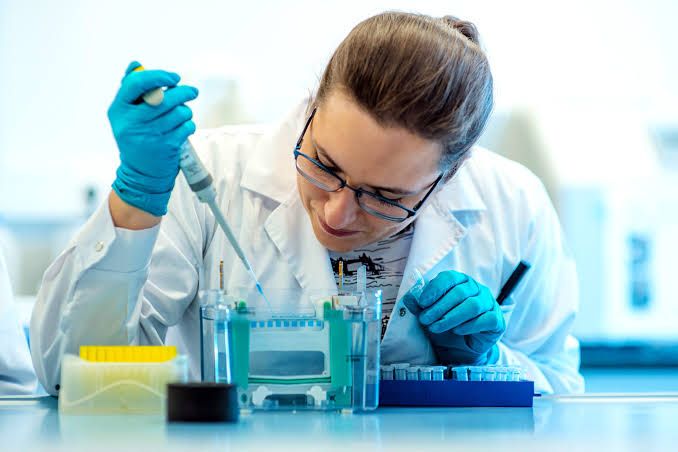
The extraction and separation of antigen proteins from bacteria and protozoa are critical steps in various fields, including vaccine development, diagnostics, and research. The procedures involve several stages: cell lysis to release proteins, purification to isolate the target antigens, and analysis to confirm their identity and functionality. Below is a comprehensive step-by-step guide on these processes.
Step 1: Sourcing the Organisms
Antigen proteins can be sourced from various bacterial or protozoan cultures. Commonly used bacteria include Escherichia coli for recombinant protein expression, while protozoa such as Plasmodium species (malaria) or Leishmania can be used for studying specific antigens.
Step 2: Cell Lysis
The first step in extracting proteins is breaking open the cells to release their contents. This can be achieved through several methods:
Mechanical Disruption
- Homogenization: Use a homogenizer or bead mill to physically disrupt bacterial or protozoan cells. This method is effective for tough cell walls.
- Sonication: Apply ultrasonic waves to disrupt cell membranes. This method is particularly useful for small volumes but requires cooling to prevent protein denaturation.
Chemical Lysis
- Detergents: Use detergents like Triton X-100 or SDS (sodium dodecyl sulfate) that solubilize membranes by disrupting lipid bilayers. The concentration must be optimized to avoid denaturation of sensitive proteins.
- Chaotropic Agents: Chemicals such as urea or guanidine hydrochloride can help solubilize proteins by disrupting hydrogen bonds but may require subsequent refolding steps.
Enzymatic Lysis
- Lysozyme Treatment: For bacterial cells, lysozyme can break down peptidoglycan in the cell wall, facilitating lysis.
- Proteases: Enzymes that digest specific components of the cell wall can also aid in lysis.
Step 3: Protein Extraction
Once the cells are lysed, the next step is to extract the soluble proteins:
- Centrifugation: After lysis, centrifuge the lysate at high speed (e.g., 10,000–15,000 g) for 20–30 minutes. This separates cellular debris from soluble proteins; the supernatant contains the extracted proteins.
- Buffer Optimization: Use appropriate buffers (e.g., phosphate-buffered saline (PBS)) with protease inhibitors to maintain protein stability during extraction.
Step 4: Protein Purification
To isolate antigen proteins from other cellular components, purification techniques are employed:
Precipitation Methods
- Salting Out: Gradually add ammonium sulfate to precipitate proteins based on their solubility at different salt concentrations. This method helps concentrate proteins while removing some contaminants.
Chromatography Techniques
- Affinity Chromatography:
- Utilize specific binding interactions between antibodies and antigens if known; this allows for selective isolation of target antigens.
- For recombinant proteins with tags (e.g., His-tag), use metal affinity chromatography where histidine residues bind to nickel or cobalt ions on a resin.
- Ion Exchange Chromatography:
- Separate proteins based on charge by passing them through a column containing charged resins (cationic or anionic). Adjusting pH or ionic strength elutes bound proteins selectively.
- Size Exclusion Chromatography (SEC):
- Separate proteins based on size using porous beads; larger molecules elute first while smaller ones enter pores and elute later.
- Hydrophobic Interaction Chromatography (HIC):
- Exploit differences in hydrophobicity by binding proteins at high salt concentrations and eluting them as salt concentration decreases.
Step 5: Analysis of Extracted Proteins
After purification, it is essential to analyze the extracted antigen proteins:
- SDS-PAGE:
- Perform sodium dodecyl sulfate-polyacrylamide gel electrophoresis to assess purity and molecular weight of isolated proteins.
- Western Blotting:
- Transfer separated proteins onto a membrane and probe with specific antibodies against target antigens for confirmation of identity.
- Mass Spectrometry:
- Analyze protein composition and structure using mass spectrometry techniques for detailed characterization.
- Functional Assays:
- Conduct assays relevant to the biological activity of the antigen (e.g., enzyme activity assays) to confirm functionality post-extraction.
Conclusion
The extraction and separation of antigen proteins from bacteria and protozoa involve meticulous procedures that ensure high yield and purity of target antigens suitable for further applications in research or clinical settings. By following these steps—cell lysis, protein extraction, purification techniques, and thorough analysis—researchers can effectively isolate valuable antigenic materials for various scientific endeavors.







